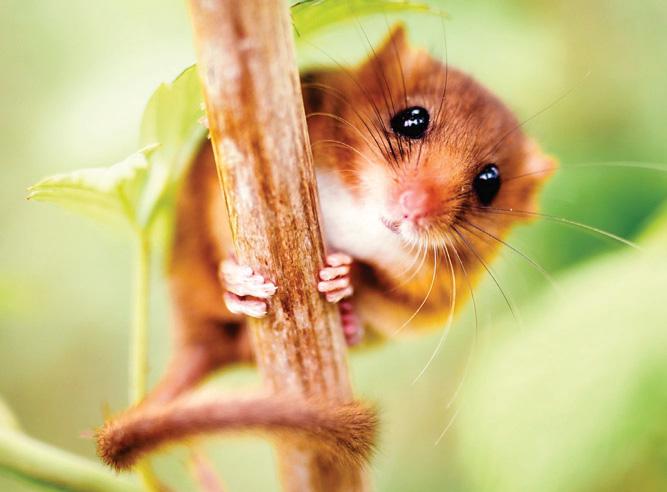Wildlife watch

March is the time when nature starts to wake up from its long winter nap. Hungry hedgehogs are up and about, and if you’re lucky you might catch a glimpse of them as they snuffle around gardens looking for juicy slugs and snails. Another creature making the most of the spring sunshine is the peacock butterfly. With its deep red wings, it brings a splash of colour as it flutters by. If you go out for a woodland walk, see if you can spot the white flowers and deep green leaves of wild garlic carpeting a shady forest floor.
Cherry trees are starting to bloom too, with delicate pink blossoms that fall like confetti when the wind blows. March is a great time to spot mining bees. These insects are smaller and less fuzzy than bumblebees, so are easily mistaken for wasps, but they are important pollinators.
This story is from the {{IssueName}} edition of {{MagazineName}}.
Start your 7-day Magzter GOLD free trial to access thousands of curated premium stories, and 9,500+ magazines and newspapers.
Already a subscriber ? Sign In

This story is from the {{IssueName}} edition of {{MagazineName}}.
Start your 7-day Magzter GOLD free trial to access thousands of curated premium stories, and 9,500+ magazines and newspapers.
Already a subscriber? Sign In

SECRETS OF THE SEAS
Take a deep dive beneath the waves as Melissa Hobson reveals the incredible animals that live in our seas.

Controlling the weather
Is technology being used to change the weather, or is it science fiction?

NEXT STOP: THE FUTURE
All aboard as JD Savage takes the fast track through 200 years of train travel.

The race is on between robots and humans
Twenty-one robots competed against human runners in the Yizhuang half-marathon in Beijing, China in April.

Growing baby corals
Meet the UK scientists giving breeding corals a helping hand.

Could you dig all the way through the planet?
Learn the science behind digging a giant hole.

Fabien Cousteau
Meet the ocean explorer who plans to build a futuristic base under the sea.

Gladiators fought big cats for entertainment
Scientists have found the first physical evidence in Europe that Roman gladiators fought lions.

HEADSCRATCHERS
Hi, I'm Pete, and I love science and the natural world. I work with the Royal Institution (Ri) in London, where you can find exciting, hands-on science events for young people.

Life on another planet?
Scientists have found molecules (groups of atoms) that could point to life on another planet.
